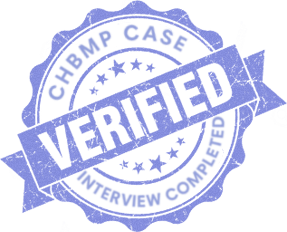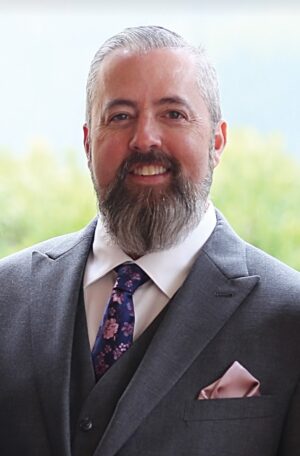



Medical Information
Medical Treatment & Hospitalization
My husband was deprived of food after the first day in the hospital. He was not given an IV for hydration for almost a week. He was never bathed. He was not given a hospital gown for at least 9 days after admission. He was scolded and shamed for not being vaccinated. He was not helped to the toilet. His call button was ignored often enough that he began texting me to call the nurses station if he needed something.
My husband was shamed for being unvaccinated from the first hour he was in the hospital. He wasn't fed after the first day. He was never bathed. He wore the clothes he was admitted in for 9 days straight. He was isolated and ignored most of the time. His call button went unanswered so he began texting me to call the nurses station if he needed something. The night he was ventilated he continously rang the nurses station in a panic because he could not breathe - his lung had collapsed. They ignored him until I called and screamed at them to check on him. He was never allowed a visitor other than hospital personnel. He was treated like inconvenient trash.
Activism & Follow-up
Watch & Share The Interview
Written by Amy Wilson (Wife)
My husband had a cold. Neither of us suspected C-19, as he did not have a fever or present any other telltale sign of the virus. On day 6 of his symptoms, he began to feel better. He worked as usual, ate dinner, seemed to be fine. Later that evening he began wheezing (he had asthma). He used a nebulizer, his breathing improved, and he went to bed. In the morning his breathing was worse and he felt it was necessary to go to the ER for a breathing treatment. I drove him there and waited in the parking lot as I fully expected him to go home with me after being treated. He was – if anything- annoyed by his symptoms, not afraid or in much distress. He walked into the hospital on his own, without assistance. I never saw him again.
The hospital refused to treat him unless he consented to a C-19 test, which he did. He was scolded for taking up room in the ER because he was not vaccinated before the test was taken. 2 hours later he was told it was positive and that he would have to be admitted. This was after they had given him a breathing treatment and oxygen and his saturation had returned to 100%. The doctor told me they would keep him overnight for observation and he would probably come home the next day. At this point I was also lectured and scolded regarding the vaccine which we had not yet received.
The next morning I was told his numbers were lower and they had started him on remdesivir. I spoke with him by text message and he reported he had not been given food or water since leaving the ER. I asked his nurse about this and she denied it. After I asked about it and insisted for 3 or 4 days, they finally gave him some IV fluids. He never received food from the time he left the ER until his death.
Each day in the hospital his condition deteriorated, in direct connection to the doses of remdesivir he was given. He would improve a bit, they would administer the drug, he would get worse. I asked about alternative therapies and was mocked. He was eventually placed on a bi-pap machine which caused his lung to collapse. At this point I was told there was no alternative except a ventilator.
On September 1st I was informed that an ECMO machine had become available and was recommended to give my husband the best chance at a “full” recovery. At this point his oxygen saturation was over 90%, but the doctor believed the ECMO would give Kevin’s lungs a chance to rest and get him off the ventilator sooner. I was wary but agreed. Kevin was transferred to a different department and a doctor who never contacted me attempted to place him on the ECMO machine without the use of an ultrasound (which I have since learned is necessary for placement of the cannula). This doctor perforated my husband’s jugular vein with the cannula, and apparently never checked its placement. The ECMO machine was turned on, essentially pumping my husband’s blood directly into his chest cavity. The doctor ordered CPR while my husband bled to death.
A different doctor called to inform me of Kevin’s death. I was then allowed to see my husband for the first time since he was admitted, although he was “still positive” for C-19. His face and chest were bruised. He was filthy. No attempt had been made to clean or cover him before I arrived. The doctor who had informed me of his death told me to get an autopsy, which I immediately requested. That doctor seemed to suspect something had gone wrong with the ECMO procedure.
I found out later that the doctor who killed my husband never spoke to me that night – or ever- because he was filing the death certificate. He listed C-19 as the cause and had it signed before my autopsy request was ordered and days before the autopsy was performed.
My husband’s body was then “misplaced” by the hospital morgue and was not available for autopsy until it was “found” several days later. Fortunately I was able to have the autopsy performed by the county medical examiner and not the hospital. The autopsy clearly reports the misplacement of the cannula and the fatal blood loss volume present in Kevin’s chest cavity. But his death certificate was not corrected nonetheless.
I attempted to pursue legal action against the hospital and the doctor but was refused on the grounds that “gross negligence is almost impossible to prove,” – a sentence I heard from every lawyer who agreed to speak to me regarding the autopsy results. Most heard the term C-19 and concluded the conversation.
My husband was the love of my life. We became a couple at 17 years old and were together for 32 years. He was an excellent father, a beloved son and brother, and a valued friend. He worked hard for his family and gave back to his community. It boggles my mind that he was treated like inconvenient trash and murdered because he hadn’t yet received an unproven medication. He was worth so much more than that.
These are just a few of the cases archived by our COVID-19 Humanity Betrayal Memory Project, and there are more being reported by survivors and families of victims every day. If you would like to help with this project, please contact us at email@chbmp.org.